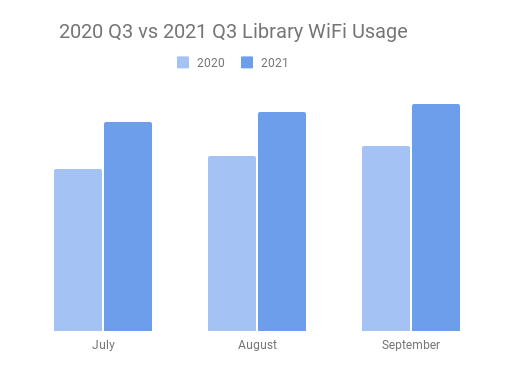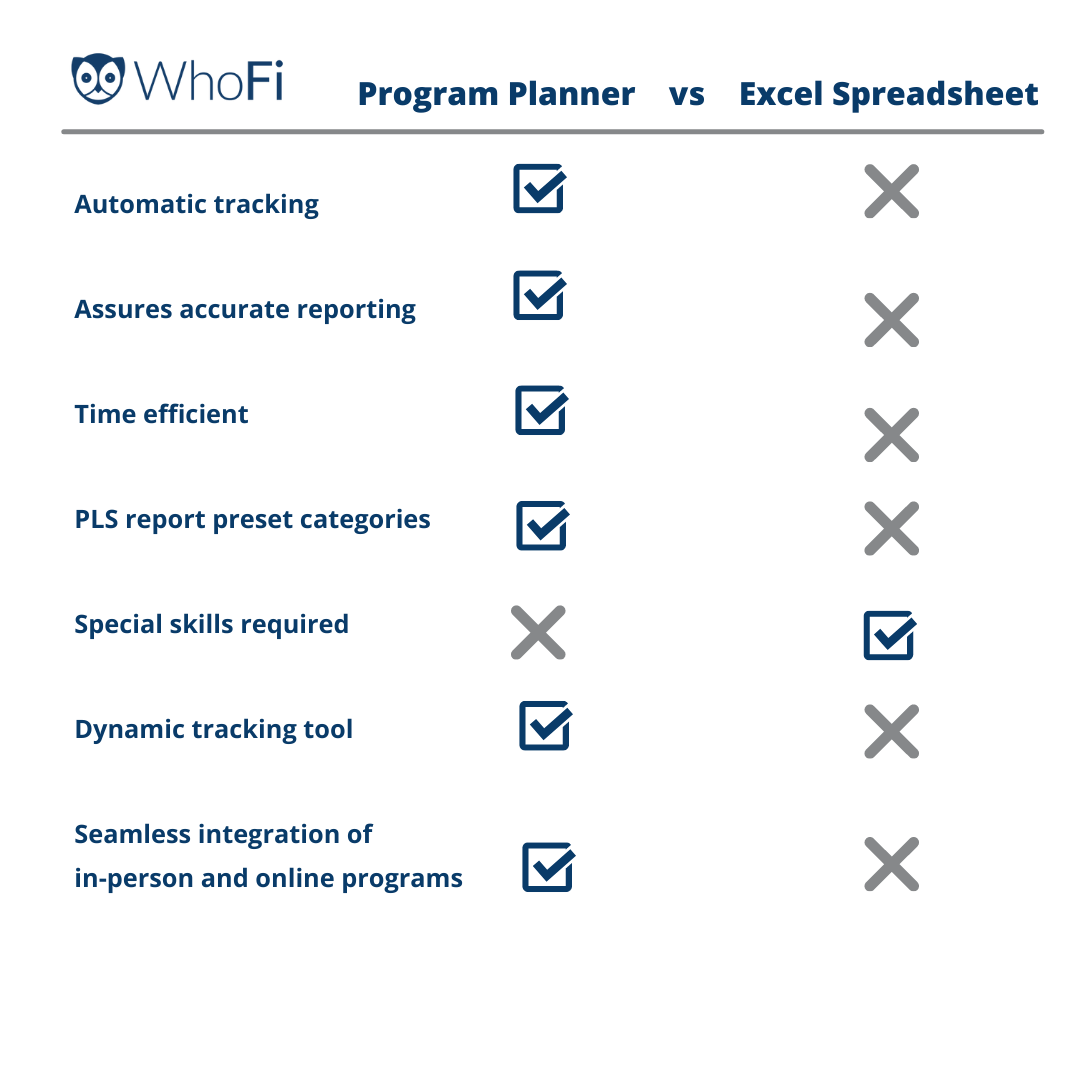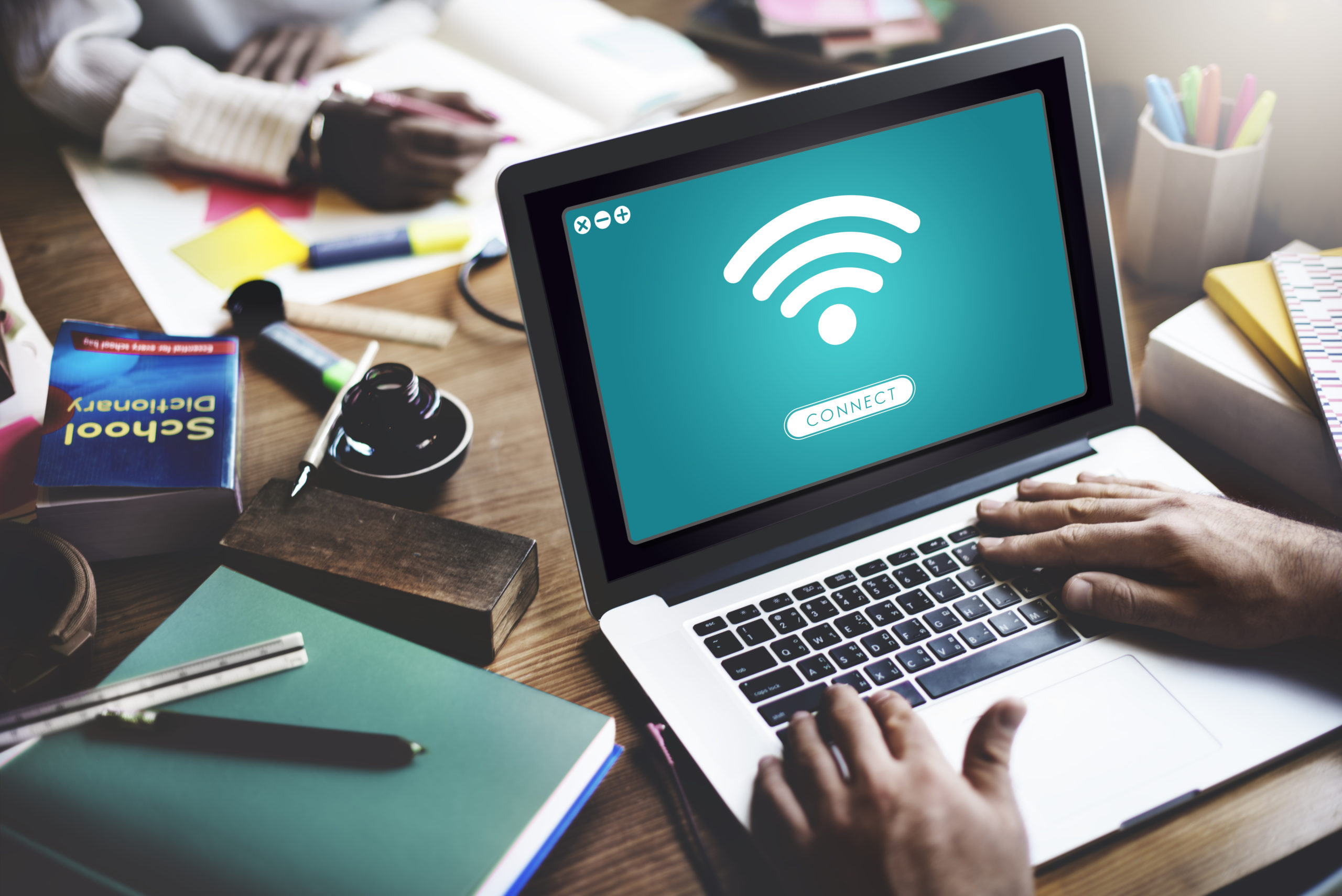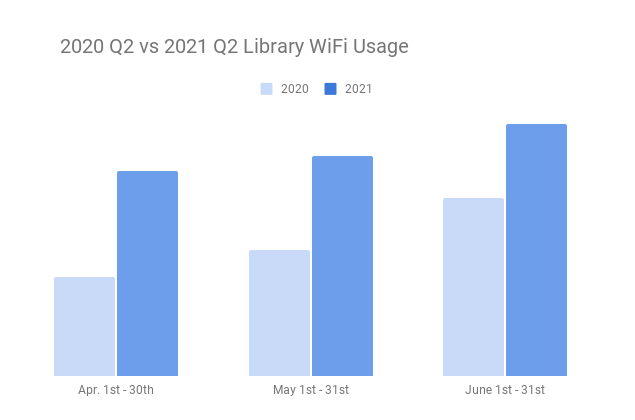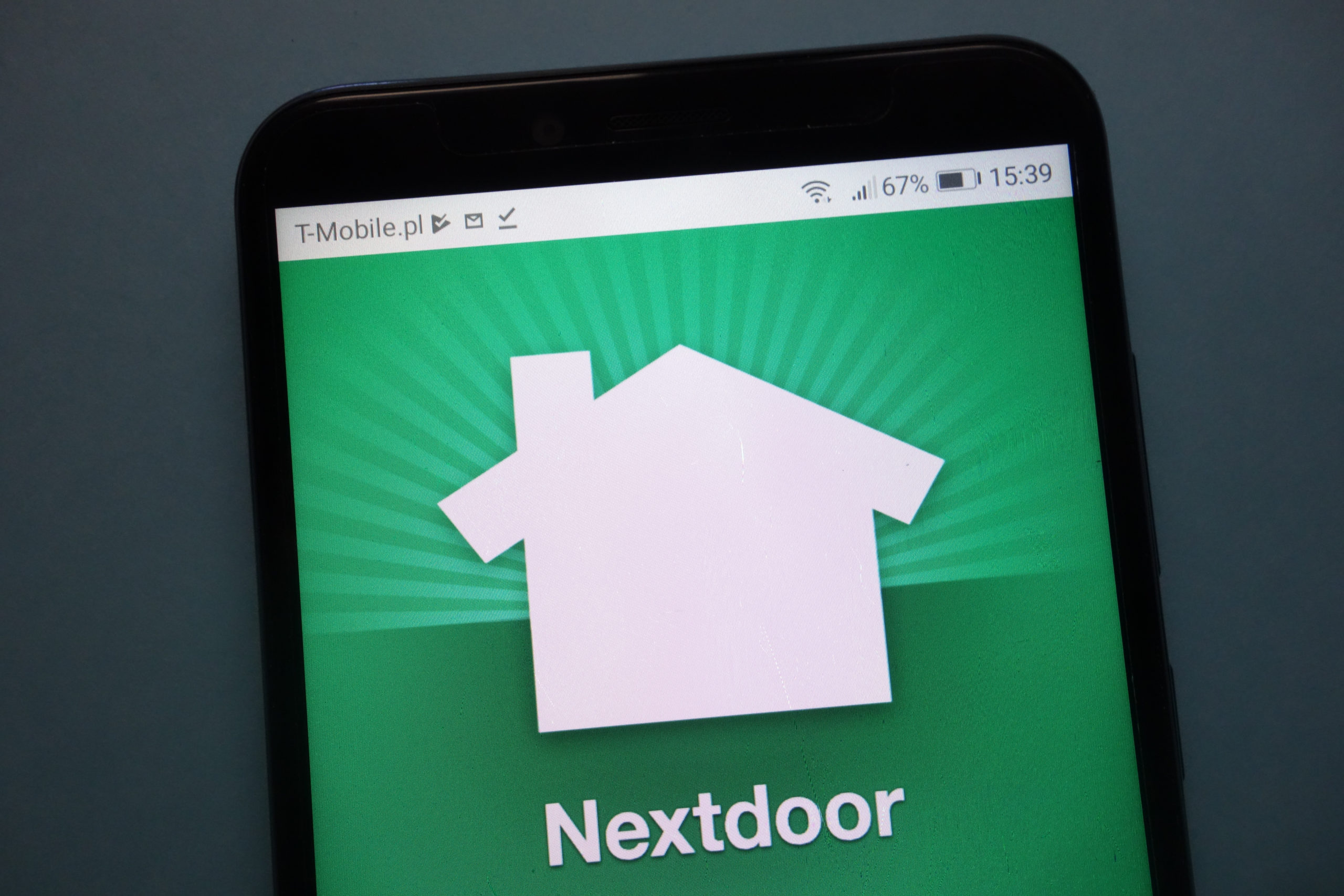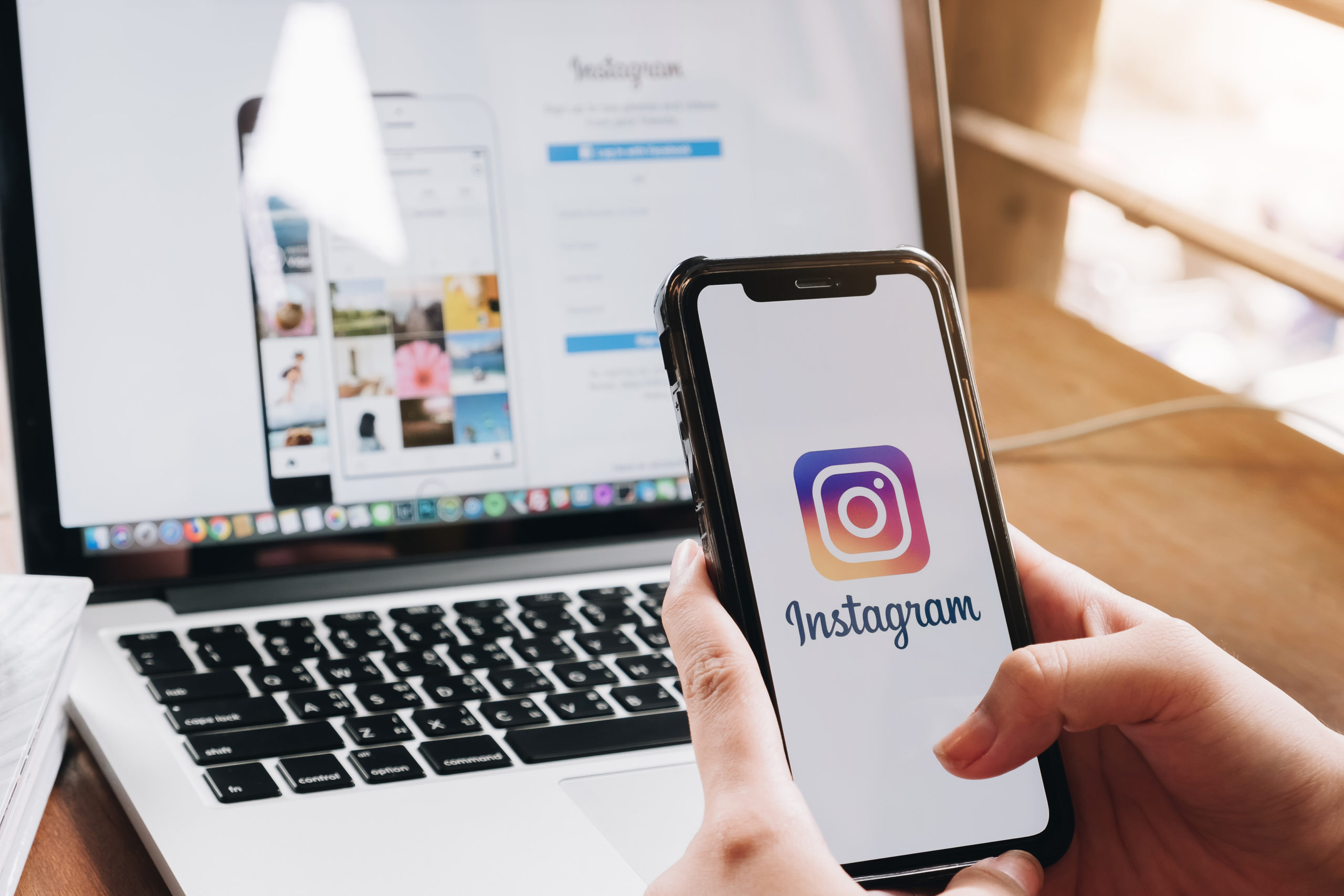Community Calendar Makes Library Program Planning Easy
December 21, 2021Analytics,Community,Community Calendar,Libraries
Libraries across the country are adapting to the digital age with more online programming and digital resources available for patrons. This growth can make it complicated to plan, track and manage programs in various formats and on various platforms. While libraries advance and grow their programs, the way they account for attendance is stuck in the past. Hand tallying and paper trails are cumbersome and time consuming. There’s a better way! At WhoFi, we want to make your job easier by…
Public Library Insights Q3 2021
November 17, 2021Analytics,Community,Libraries
When analyzing WiFi insights data and looking for usage trends over the past year, we’ve identified clear fluctuations in use that seem to correlate with particular service areas, important timelines in the pandemic, and/or library outreach efforts. As we look at the data for Q3, there are some interesting changes to these numbers, along with a steady increase in WiFi usage across service areas. The COVID-19 pandemic certainly brought about many changes in the way patrons interact with their…
Program Planning For Public Libraries In The Digital Age
October 26, 2021Analytics,Community,WiFi analytics,Community Calendar,Libraries
As more programs move outside of the library or on a virtual platform, libraries are struggling to find ways to account for program attendance. A hodgepodge of meeting room scheduling software, excel spreadsheets and manual tabulations just isn’t meeting the needs of the modern library in the digital age. Libraries are seeing program attendance that’s higher than it’s ever been because online platforms can make programs available to more people, since there’s no space or time restrictions like…
Public Libraries Solution To Meeting New PLS Survey Reporting Requirements
September 29, 2021Analytics,Community,WiFi analytics,Community Calendar,Libraries
The COVID-19 pandemic transformed the way libraries offer programming, with more programs being made available online. With this change also came changes in reporting requirements related to programs. This year libraries will be required to submit additional information about program attendance for the PLS survey. Libraries will need a way to fulfill the upcoming PLS survey requirements that include programming type (in-person, online, or both), attendance numbers, and categories. You may…
How Libraries Can Keep Loaner Devices Safe With The New Emergency Connectivity Fund Program
August 31, 2021Data Privacy,Community,Libraries
In an effort to bridge the digital divide, part of the American Rescue Plan Act (ARPA) of 2021 includes $7.17 billion for the Emergency Connectivity Fund (ECF) program. This program provides funding for public and tribal libraries and K-12 schools to purchase devices like hotspots and laptops for use away from library and school grounds. The ECF presents an extraordinary and unprecedented funding opportunity for libraries to expand broadband equity to those who need it most beyond the confines…
Public Library Insights Q2 of 2021
August 4, 2021Analytics,Libraries
When analyzing WiFi insights data and looking for usage trends over the past year, we’ve identified clear fluctuations in use that seem to correlate with particular service areas, important timelines in the pandemic, and/or library outreach efforts. As we look at the data for Q2, there are some interesting changes to these numbers, along with a steady increase in WiFi usage across service areas. The COVID-19 pandemic certainly brought about many changes in the way patrons interact with their…
WhoFi Moves To New Office Space
We moved! Our team recently completed the set up of our new office and we are so excited to be in our new space! The new modern space fits our growing team and our vision of work. Like many other companies and many of our community partners, we're taking a hybrid approach to our new office. Everyone is continuing to work from home as an option for the convenience and flexibility that it provides. But we also have our office as a place to get away from the house, that has resources that don't…
Zoom for Public Libraries
July 8, 2021Co-working space,Community,Libraries
Online meetings are becoming the norm for many of us for a variety of reasons. Some libraries are migrating their in-person programming to online formats using tools like Zoom or Facebook Live. Since some libraries are still are operating in a limited capacity, their physical meeting spaces may be off-limits, but online meeting spaces are still available and being created using tools like Zoom. So what exactly is Zoom and how can public libraries use Zoom to meet community needs? What is Zoom?…
Nextdoor for Public Libraries
June 25, 2021Community,Libraries
When COVID-19 closed public libraries, librarians quickly adapted their services and outreach efforts for the online space. In this post, we continue the Libraries Online series. If your public library is looking for more ways to connect to your community, consider creating a Nextdoor account for your library. It’s a great platform to communicate to the hyperlocal community about resources and events your library offers. What is Nextdoor? Nextdoor is a private, free social network to connect…
How To Use Instagram To Share Your Library’s Story
June 8, 2021Community,Libraries
Social media is playing a significant role in helping libraries stay relevant in our ever-growing digital society. Just as they are leading the charge in digital equity. As part of our Libraries Online series, we’re sharing ways that libraries can use social media to connect to their community and promote library services. This blog will focus on the Instagram platform and how to use its visual layout to share your library's story. Using Instagram for your library is a great way to share…


